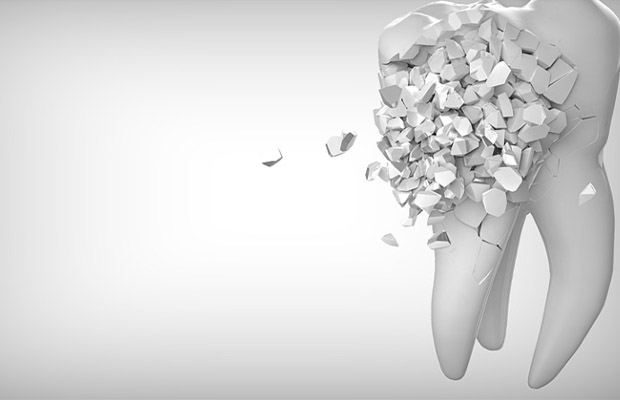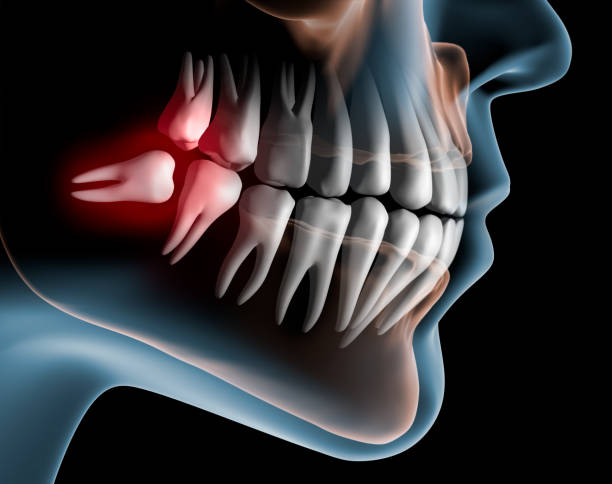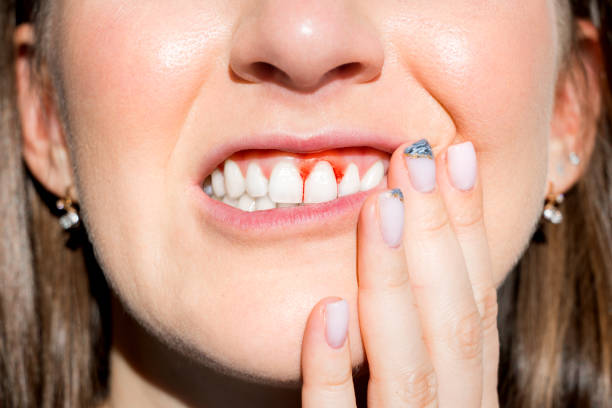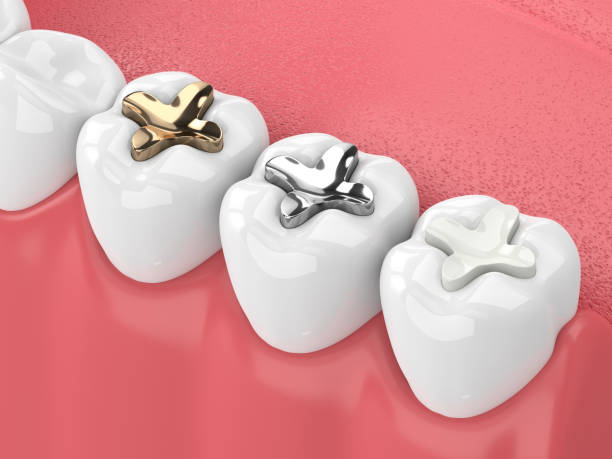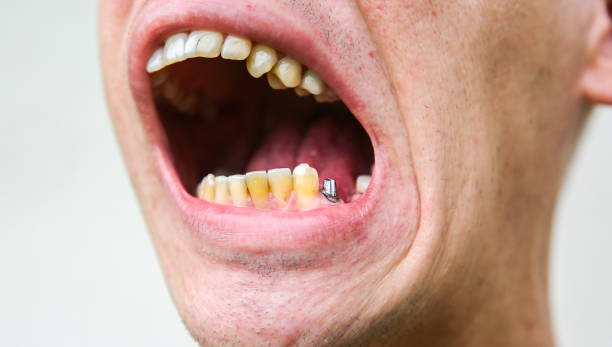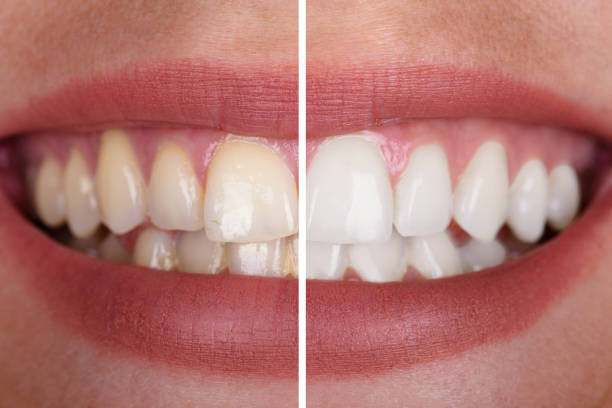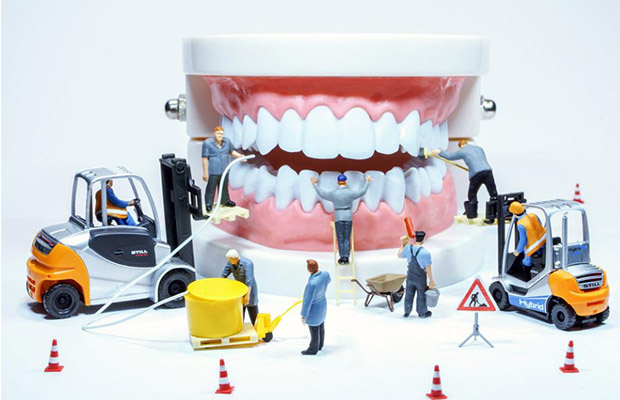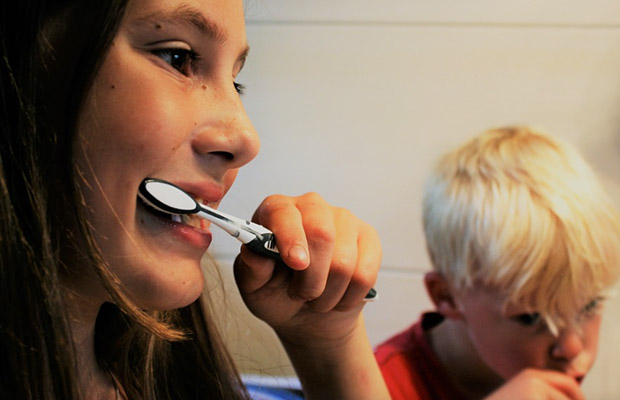Going to the dentist is the best course of action for a tooth infection, but many people find the thought of sitting in a dental chair to be unsettling. If you’re one of those thinking about how to get rid of a tooth infection without antibiotics, we can help you find relief.
There are some natural remedies such as salt water rinse or baking soda that you can use to both help control the pain and help stop the infection from getting worse or spreading while you wait for the infection to die off.
Although not all of these treatments will be effective for everyone, they can provide some relief if you are suffering from tooth pain due to an infection.
Table of Contents
Causes Of Tooth Infection
A tooth infection can be brought on by a variety of factors.
For instance, a periapical tooth abscess is an infection brought on by the bacterial invasion of the dental pulp, the tooth’s interior portion that houses nerves and blood vessels.
Another type of dental abscess that can develop as a result of bacterial buildup in periodontal pockets is the periodontal abscess. In the gum tissues, it results in the formation of a pus pocket.
In the mouth, there are countless bacteria, some of which are vital to digestion. However, the acids that these bacteria produce have the potential to harm the tooth’s interior.
Additionally, the likelihood of getting a dental abscess rise. It is crucial to practice good oral hygiene because of this.
Following tooth decay, trauma to the mouth, or failed root canal therapy, dental abscesses frequently develop.
Some common causes of tooth infection include:
- Poor oral care, such as, not brushing twice a day and not flossing
- A prior dental procedure or injury (such as, after dental cleanings) that makes it easier for bacteria to penetrate
- Consuming lots of sugary foods or beverages, which encourages bacteria to form plaques that cause tooth decay and abscess
- Gum disease (also called periodontal disease)
- A weak immune system can be caused by underlying medical conditions, such as AIDs and diabetes
Symptoms Of Tooth Infection
Pain is the most noticeable sign of a tooth infection. A toothache that is excruciating, acute, or shooting is a sign that the infection needs to be treated. Some of the other common symptoms of tooth infection are:
- Severe, persistent, throbbing toothache that can radiate to the jawbone, neck, or ear
- Sensitivity to hot or cold temperatures
- Sensitivity to the pressure of chewing or biting
- Fever not associated with flu or another illness
- your face, cheeks, or jaw swelling.
- Tender, swollen lymph nodes under your jaw or in your neck
- A sudden rush of foul-smelling and foul-tasting, salty fluid in your mouth, and pain relief, if the abscess ruptures
- Difficulty breathing or swallowing
How To Get Rid Of A Tooth Infection Without Antibiotics?
1. Saltwater Rinse
Rinsing your mouth with a warm saltwater solution is one of the simplest ways to try to stop the spread of infection and lessen the pain associated with a tooth infection. In addition to irrigating your mouth, a saltwater rinse will kill some of the bacteria there. If you have an abscess, it can help break up the pus surrounding the tooth and rinse some debris out of your mouth. To make a straightforward saltwater rinse, just combine warm tap water and regular table salt. Simply stir a little warm water into a small cup and add about ½ a teaspoon of salt. Spit out the solution after rinsing your mouth for a few minutes while thoroughly swishing it around.
2. Baking Soda
You likely already have baking soda in your kitchen as a home remedy for tooth abscesses. Baking soda has antibacterial properties and is the same thing you keep in the fridge to reduce odor. Plaque buildup can be lessened and discomfort can be lessened by rinsing your mouth with a baking soda and warm water mixture. You can make a paste of baking soda and water and apply it directly to your tooth or gum if you have an abscess on the side of your tooth or in your gums rather than using the rinse. Use the rinse if the infection is located elsewhere on your tooth.
3. Essential Oils
Since ancient times, people have used essential oils for their therapeutic benefits. The oil from the plant’s leaves and stems is extracted using cold pressing, steam distillation, or water distillation to create essential oils. The most popular modern technique for obtaining oil from plants is steam distillation, but earlier generations frequently used cold pressing to ensure the oil was of the highest caliber.
You must always keep essential oils in a cool location away from things like spices or food if you want to use them to reduce pain and encourage healing. Use a cotton ball or cotton swab to apply a few drops of essential oil to your tooth.
There are many different gentle essential oils that have been proven to have some success treating any number of dental issues including infections like:
- Oregano oil
- Thyme oil
- Clove oil
- Tea Tree oil
- Lavender oil
Make sure you only use pure essential oils of medicinal grade when using them. Any health food store will have these. You can purchase them online and at a few food cooperatives as well. Buy from reliable companies with a solid track record of excellence. Before using an essential oil, double-check the bottle to make sure it says it is therapeutic grade. These days many makers use “natural” oils to do everything from flavor baked goods to make perfume and soaps. These oils are scent oils rather than authentic essential oils. These oils are hazardous if consumed and have no therapeutic value.
4. Black Tea Bag
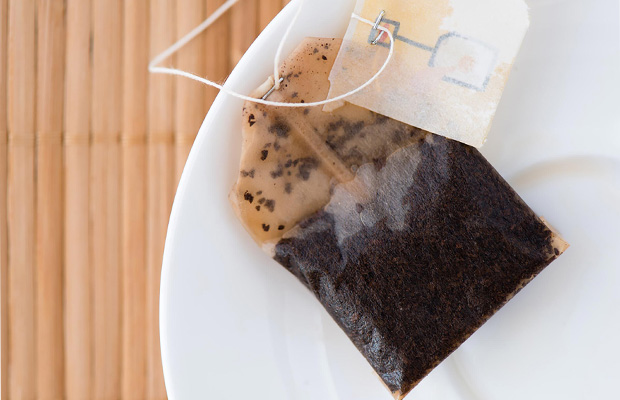
Tannin and other antioxidants found in black tea aid in the prevention of tooth infections. It aids in reducing inflammation that results from dental pain. The full health of the mouth is benefited.
Five minutes in lukewarm water with a black tea bag. Once the affected area has been covered with this warmed black tea bag for a few hours, rinse your mouth out with warm water.
5. Hydrogen Peroxide
Almost everyone keeps hydrogen peroxide in their first aid kit or medicine cabinet. Although it can be used for a variety of household and first aid purposes, its best-known uses are for mouthwash and for preventing infections in cuts. One of the best treatments for a tooth infection is this straightforward first aid standard. Use a 1:1 ratio or combine equal parts hydrogen peroxide and warm water to make a mouthwash, then rinse your mouth with it.
6. Aloe Vera Gel
Because it naturally fights bacteria, aloe vera gel is frequently used to treat burns, cuts, and skin irritations. However, it also works well to relieve the discomfort associated with an infected tooth. Gum abscesses can also be treated with it. Make sure you purchase food-grade aloe vera when you purchase aloe vera gel to put in your mouth so that it is secure for consumption. Aloe Vera liquid can also be used, but aloe vera gel is much simpler to apply to your teeth and gums. For additional pain relief, keep the bottle in the fridge. You can get immediate pain relief and the added benefit of battling infection by applying ice-cold Aloe Vera gel to a painful infected tooth or infected gums.
7. Garlic
One of the best naturally occurring treatments for a variety of infections and diseases is garlic. Garlic is one of the best treatments for a dental infection because it has anti-bacterial and anti-inflammatory properties that work as natural antibiotics.
Apply some crushed garlic or garlic in the form of a solution to the hurt tooth to help lessen discomfort and infection. Rinse with warm water after the toothache has subsided. Use it three to four times daily until the infection is completely gone for the best results.
8. Coconut Oil Pulling
Oil pulling is a somewhat contentious practice. It’s suggested to do it every day by some people who claim it helps maintain good dental hygiene. However, there is no proof that oil pulling has any therapeutic advantages for dental health. Because liquid coconut oil has potent antibacterial properties, oil pulling with it may help shorten the duration of the infection or make the symptoms more tolerable.
9. Cold Compress
For tooth pain relief and to lessen swelling around the mouth, try making your own cold compress at home.
Try creating your own cold compress by enclosing ice in a clean washcloth or towel to create a smaller ice pack, then applying it on the outside of the painful area because most conventional ice packs are large and rigid.
You can also use fruit, iced water, or a bag of frozen vegetables. A tooth infection can be painful, but even an ice cube massaged onto the sore gum can help.
Use this treatment as often as necessary, up to several times per day.
10. Over-the-counter Pain Killers
The pain and any radiating pain brought on by your tooth infection can be managed with over-the-counter analgesics like acetaminophen, naproxen, or aspirin. Just be careful not to exceed the recommended dosage and make sure they won’t negatively interact with any medications you are taking.
When To See A Dentist?
A cavity, chip, or crack allows bacteria to enter the tooth, resulting in tooth infection. Teeth infections have the potential to spread to your gums, jaw, or other teeth. If you experience any of the symptoms of a tooth infection, you should seek immediate medical attention from a dentist to have the infection treated. If a tooth infection is not treated, it can have negative effects on your overall health.
You can manage the signs of a tooth infection with natural remedies, but you still need to see a dentist get the infection treated. To determine if you require a root canal and to assess the extent of the infection’s damage, the dentist may take X-rays. A course of antibiotics might also be necessary. The moment you think you may have an infected tooth, you should call a dentist.
How Does A Dentist Treat A Tooth Infection?
A dentist can begin treating the infection, eliminating any abscesses that have developed, and evaluating the damage once they have determined that you have an infection. Typically, an antibiotic prescription will also be given to you. In order to get rid of the bacteria, the dentist will go in and clean out any pockets if there are abscesses in the tooth or in the gums close to the tooth. When a tooth is infected, that can frequently offer instant pain relief. The dentist will examine your teeth to determine whether a root canal is necessary to save the tooth.
Other Posts You Might Like: How To Get Rid Of Yellow Teeth?

